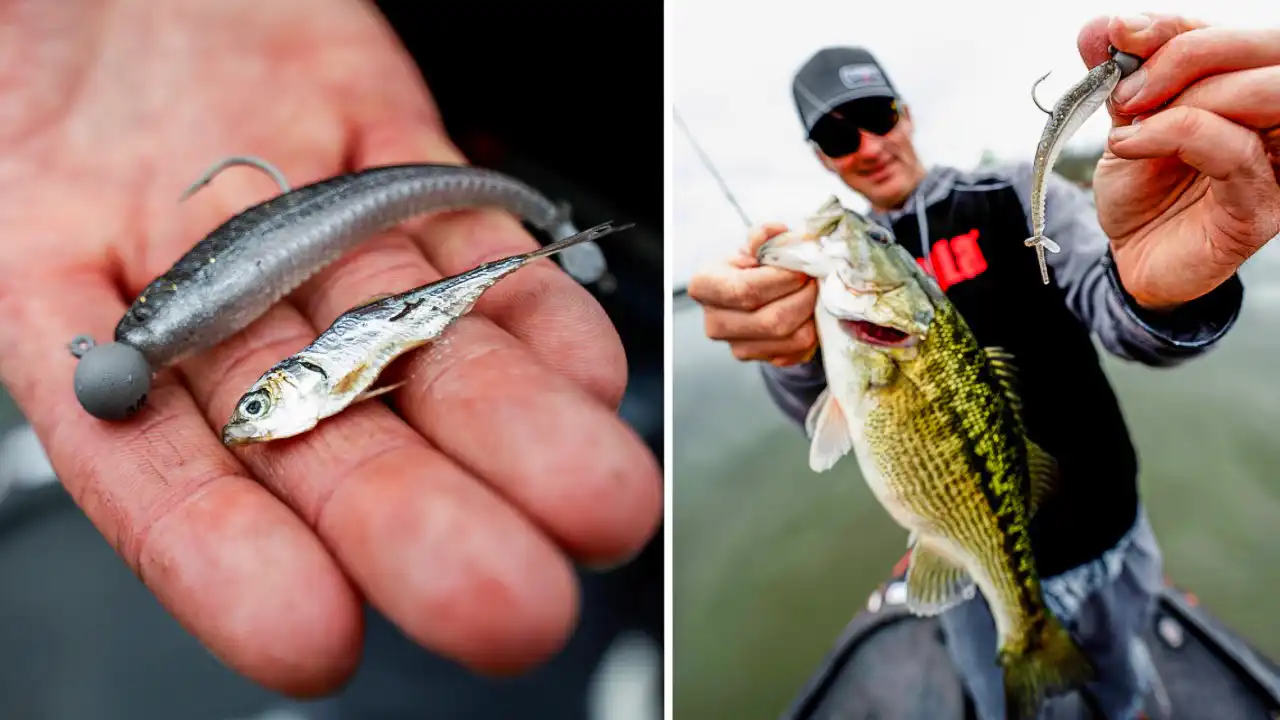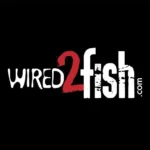When spotted bass are on the move, and you want to catch them before they bed, you need to focus on one key factor—bait. In this video, professional angler Dustin Connell breaks down his go-to strategy for locating and catching spotted bass using electronics, a jig and minnow, and a sharp understanding of seasonal fish behavior.
TACKLE USED (retail links)
- MINNOW PLASTIC – Rapala CrushCity Mooch Minnow: Buy at Bass Pro Shops | Buy at Tackle Warehouse | Buy at FishUSA
- JIG – VMC RedLine Series Tungsten Swimbait Jighead: Buy at Bass Pro Shops | Buy at Tackle Warehouse | Buy at FishUSA
- SWIMBAIT – Rapala Crush City “The Mayor”, 2.5-inch: Buy at Bass Pro Shops | Buy at Tackle Warehouse | Buy at FishUSA
- REEL – Shimano Vanford Spinning Reel, 3000 size: Buy at Bass Pro Shops | Buy at Tackle Warehouse
- LINE (braided mainline) – Seaguar Smackdown Braided Line Flash Green, 15-pound: Buy at Bass Pro Shops | Buy at Tackle Warehouse
- LINE (fluoro leader) – Seaguar Gold Label Fluorocarbon Leader, 12-pound: Buy at Bass Pro Shops | Buy at Tackle Warehouse
FINDING BAIT TO LOCATE BASS
No matter the time of year, bass follow their food source. As water warms up, shad start piling into creek arms, making these areas prime fishing spots. Connell uses his 2D sonar to scan large sections of the lake, identifying where the majority of the bait is concentrated. This technique helps him establish a pattern that can be applied across the lake.
THE RIGHT BAIT: WHY THE MOOCH MINNOW WORKS
Connell ties on the CrushCity Mooch Minnow, designed for a realistic profile and subtle tail action. Unlike traditional paddle tails, the Mooch Minnow has a unique tail that shimmies with minimal movement, making it hard for bass to pass up. He pairs the Mooch Minnow with a VMC RedLine Tungsten jig head, which provides a compact profile and fast fall rate, allowing anglers to reach suspended fish quickly.
DIALING IN THE PERFECT CAST
Using forward-facing sonar, Connell identifies bass swimming toward him and times his casts for maximum effectiveness. He explains how understanding fish migration patterns and adjusting lure presentation accordingly can make or break a day on the water.
MATCHING THE BAIT PROFILE FOR BIGGER BITES
Size matters when it comes to bait selection. Connell inspects the shad in the lake and matches his bait accordingly, opting for smaller-profile baits when needed. He’ll upsize accordingly, especially when targeting the biggest spotted bass in tournaments. He emphasizes the importance of adjusting size, weight, and action based on the conditions and fish behavior. After catching several smaller males, or “buck bass”, in the backs of pockets, Connell moves toward the mouth of the bay, because sometimes bigger fish hold slightly deeper before committing to shallower spawning areas.
BOAT SETUP
- TROLLING MOTOR – Minn Kota Ultrex QUEST: Buy at Bass Pro Shops
- FISH FINDER – Lowrance HDS PRO 12 Fish Finder/Chartplotter: Buy at Bass Pro Shops
- FORWARD-FACING SONAR – Lowrance ActiveTarget 2 Live Sonar: Buy at Bass Pro Shops
- BOAT – Triton 21 TRX: Check out at Triton Boats
- MOTOR – Mercury Pro XS 250 hp: Check out at Mercury












